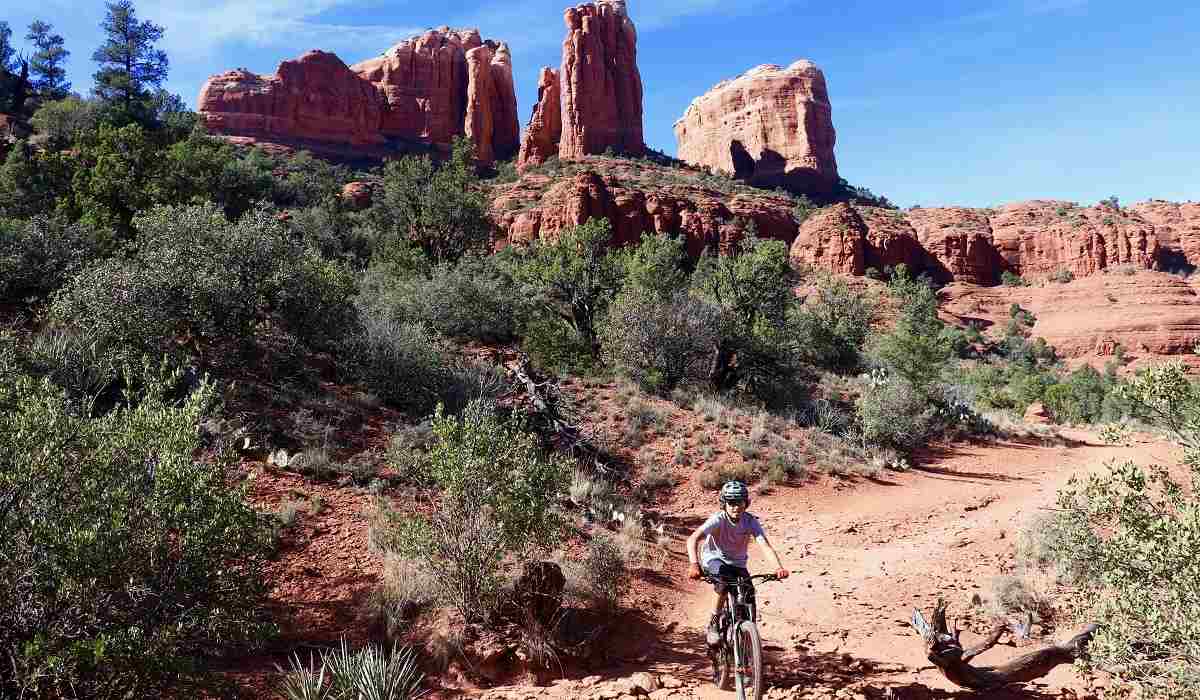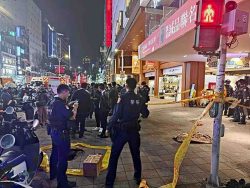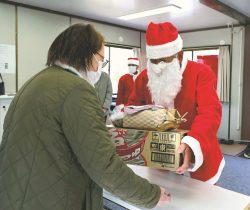
Sedona, Ariz., relies heavily on tourism but has struggled to provide enough affordable housing for its workforce.
13:26 JST, March 25, 2024
It is the driver who takes tourists on Jeep tours. It is the veteran who works as a carpenter. It is the person who works at the Whole Foods that sells sashimi-grade salmon for $44.99 a pound. They all live a precarious life sleeping every night in their cars parked somewhere around Sedona, Ariz.
It’s become a big problem for the tony tourist town, which is why the Sedona City Council approved a program last week that temporarily converts an empty parking lot into a place where families or workers or students can live while trying to find a permanent home.
Detractors said they feared the lot would eventually become an encampment of tents, which are not allowed under the program. “It’s a very slippery slope,” one resident wrote to the city. But proponents argued that this is needed in a city that lacks affordable housing and where business owners say no one wants to work to service a steady stream of tourists. City officials say state protections for short-term rental hosts make it difficult to provide affordable housing.
Council members voted 6-1 on March 12 to provide 40 first-come, first-served spots for people experiencing vehicular homelessness to have a safe place to park. If the effort earns enough signatures, the project will land on November’s ballot.
“When you have something as divisive as this, you could break this community. And I don’t want to see that happen,” said Vice Mayor Holli Ploog before lodging the sole dissenting vote.
Ploog said she didn’t like the process that led to the vote but said she would sign the petition to put the project on a ballot because she wants to know what residents think.
This is all happening in a city where temperatures reach as low as the 30s and as high as the triple digits, but those against the project want the lot site to again host a music venue and not provide safety for those living in their cars.
“They just [derailed] our project with no care for the working people,” Mayor Scott Jablow told The Washington Post on Monday.
He said critics spread misinformation, saying that the project will draw people from throughout the country, but the program is built to ensure that doesn’t happen: Participants must provide vehicle registration and proof of insurance along with a proof of employment or a school voucher.
Those who live in their vehicles have found refuge parking overnight in the Coconino National Forest, but recent changes curbed the length of overnight camping stays. Others just park in business parking lots or on streets, prompting police to shoo them away.
People living out of their cars face different challenges than people experiencing homelessness who live outside, according to an agenda item. They risk towing and impoundment (and the associated fees) while having an unmoored place to sleep. “They often maintain work and community ties not afforded to individuals living on the street,” city staff wrote.
There was an outpouring of emotion from both sides of the issue, as seen by the roughly 65 people who spoke during the public comment portion of the meeting. People also wrote in trying to persuade council members.
“The site is likely to become a magnet for chronically unemployed people who come to Sedona seeking an essentially free place to sleep,” wrote resident William D. Noonan, adding that it will be home for “someone who works an hour or two a week for the opportunity to live at taxpayer expense in one of the most scenic homeless sites in the country.”
Another resident, Joanne L. Makielski, wrote that it was unfortunate that it had to be considered, but it did. “These are people who work in our town and we all depend on them. We must support them. Denying this program will not make our homeless population go away,” she wrote. “Let’s give them a ray of hope.”
The city-owned site, 41 acres on the western end of Sedona, is vacant. It used to be a parking lot for the Sedona Cultural Park, an amphitheater that was run by a private business until the early 2000s. City officials intend to develop housing on the property, which is why they bought the land in December 2022, and this is supposed to be a temporary solution that’ll last a couple years to remedy an immediate problem.
The parking spots will be on six acres at 75 Cultural Park Place, in the northwestern corner of the property. It will hold 40 vehicles and two recreational vehicles a night, with room to expand. The spots will be delineated with recycled fire hose.
The Verde Valley Homeless Coalition will manage the site, which will be active from 4 p.m. to 8 a.m. every day. The site will otherwise be closed with fencing to ensure that it doesn’t turn into an encampment, as many residents fear.
There will be portable restrooms along with trash and recycling bins. There will also be an area to cook meals.
The site is sorely needed, according to officials: The city’s housing needs assessment in 2020 found that Sedona had an unfulfilled need for 1,260 affordable housing units.
Short-term rentals have greatly increased since 2020, from 744 (12 percent of the city’s housing stock) to 1,089 units (16 percent) now. That has provided more space for tourists and created jobs while “decreasing housing availability for locals,” according to the agenda item.
Jablow said state restrictions on short-term rentals have tied the hands of local officials to help residents. Legislation in Arizona and Tennessee has protected hosts’ rights. In 2016, Arizona passed a law that prevented cities and counties from banning short-term rentals. But that’s still not enough for local leaders such as Jablow to help offer affordable housing.
Home prices have shot up 50 percent since 2020, from an average of $645,000 in the first half of 2020 to $971,000 in the first half of 2023, according to the staff report. Rent for an average two-bedroom apartment is now $2,150 a month.
Like many cities that depend on tourism to stay afloat, Sedona has struggled with having enough affordable housing for its workforce. The solution to the current crisis is deed-restricted affordable housing, “which takes years,” according to the agenda item.
The Sedona Oak Creek Unified School District reported 19 homeless students enrolled from 13 families. Of those, five are living in cars or campers. They usually park every night in the Coconino National Forest. The local food pantry surveyed its users and found that 39 lived in their cars and worked in Sedona.
The police department responded to 18 calls from residents during the last two months of 2023 about people in vehicles trespassing on private property. Those calls, plus actions by patrol officers, meant 100 people were “moved along” in two months.
A public outreach effort found 32 people who live in their vehicles and work in Sedona who were interested in the “Safe to Park” program. They reported working at Whole Foods, Safeway, a hotel that offers classes on crystals and yoga, a wood-fired pizza restaurant, a juice shop, a spa and a coffeehouse, among others.
One person wrote to council members that they were forced to live in their car after their rent shot up 35 percent in the span of two years. Another wrote that they shower at a gym before starting work at a supermarket.
Jablow asked for civility ahead of public comment. “It was terrible what I saw at the [meeting] a month or so ago,” he said. What ensued was two hours of impassioned residents making their cases. (The meeting’s video ran for 9½ hours, about three times longer than the second-longest meeting so far this year.)
City staff told council members that organizations offer safe-parking programs in Colorado, Nevada, California (including Los Angeles), Oregon and Washington state. Even a car dealership in Charlotte offered up its lot.
Jablow said the city has tried and failed to build three affordable-housing projects in the past two years because of interest rates. He said there are people who are professionals making good money who can’t afford to live in his city. He said there are plumbers who can’t retire and sell their businesses because there aren’t enough workers to pick up the mantle.
“Who’s going to run the food stores?” he said.
"News Services" POPULAR ARTICLE
-

American Playwright Jeremy O. Harris Arrested in Japan on Alleged Drug Smuggling
-

Japan’s Nikkei Stock Average as JGB Yields, Yen Rise on Rate-Hike Bets
-

Japan’s Nikkei Stock Average Licks Wounds after Selloff Sparked by BOJ Hike Bets (UPDATE 1)
-

Japanese Bond Yields Zoom, Stocks Slide as Rate Hike Looms
-

Japan’s Nikkei Stock Average Buoyed by Stable Yen; SoftBank’s Slide Caps Gains (UPDATE 1)
JN ACCESS RANKING
-

Keidanren Chairman Yoshinobu Tsutsui Visits Kashiwazaki-Kariwa Nuclear Power Plant; Inspects New Emergency Safety System
-

Imports of Rare Earths from China Facing Delays, May Be Caused by Deterioration of Japan-China Relations
-

University of Tokyo Professor Discusses Japanese Economic Security in Interview Ahead of Forum
-

Japan Pulls out of Vietnam Nuclear Project, Complicating Hanoi’s Power Plans
-

Govt Aims to Expand NISA Program Lineup, Abolish Age Restriction
























